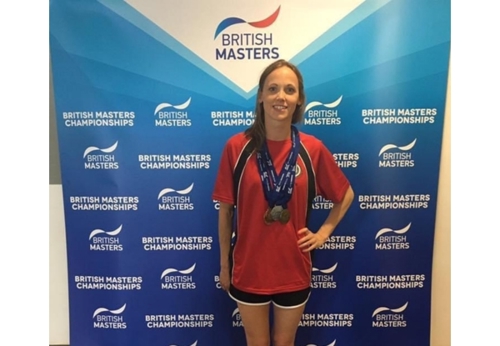Meet our resident swimming guru
An introduction to Tara
Our very own Area Sports Development Manager, Tara, has a rich swimming history which we just had to spotlight for all to see!
Titles won:
- Multiple British Masters Record Holder (1999-2006)
- Multiple British Masters National Champion (1999-2006)
- Quadruple Silver Medallist at the World Masters Championships (2006)
- Ranked Number 1 in the World in Masters age group for multiple events 2004-2006.
After a successful run of awards, Tara continues to swim for fitness and still takes part in the occasional race, currently holding the East of England record for 50m backstroke in her age group. She is qualified as an Assistant Swimming Coach and Level 2 Swimming Teacher as well as holding a Sports Science degree. Between 2003-2005, Tara trained at a top club in Australia amongst Olympic Champions and World Record Holders.

So as our resident swimming guru we asked Tara to share some of her experience with you. Here are Tara’s top tips when it comes to improving stamina and technique in the water:
Work on your body position
Swimming is all about increasing propulsion (through your arm strokes and kick) and reducing drag. By ensuring your body is as streamlined and as parallel to the top of the water as possible you will reduce the drag. You can practice this by looking at how well you float, try different head positions (you really want the water to hit just above your eyebrow line while swimming). Use your core to improve your leg position.
Add variety and progression to your training
Lots of swimmers do the same swim every time they go to the pool (“I did 40 lengths today”, “I swum all front crawl”). You can add different strokes to your training to reduce the risk of injury and make your training more effective. If you need help with learning a new stroke there are some brilliant adult lessons at selected centres that will support you with this.
Variety can also be introduced with equipment (using a kickboard to isolate kick and a pull buoy to isolate arms) or by swimming different distances and speed. Try and break your total swim down to a number of repeats working at a faster speed than you would normally do and taking a rest between each one.
Film yourself swimming
Get a friend to record you swimming so that you can see your swimming technique as often it looks different to how it feels. Look at effective swimming videos on the internet and see how you could improve. Check your head position, recovery and how much you kick.
Count your strokes!
How many strokes does it take for you to swim a length of your pool? Count each hand entry (eg. one right arm is one stroke) and then work on all the above and see if you can reduce the number of strokes you are doing. Fewer strokes = more efficient swimming!
A top-level swimmer will do 10-13 front crawl strokes for 25m when swimming relaxed.
Introduce sculling to your training
The arm element of each stroke is made up of a series of sculls. Coaches of swimmers often talk about “holding the water” and this is where your hands and forearms get great propulsion by sculling to get a good “grip” on the water. See sculling as learning to feel the water pressure to improve the strength of each stroke.
Start with sculling the ‘catch’ position with your arms extended in front of you, shoulder-width apart. Hands move in a figure of 8 with thumbs down to the bottom on the way out and thumbs up on the way back in.
Enjoy your swimming!
You are amazing for just being in the pool, the physical and mental benefits of regular swimming are well documented.
Find you nearest centre and check out their pool timetable.